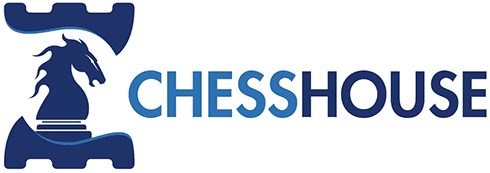How do I introduce chess to a bright 6 year old?
The great news is that youngsters tend to be fascinated immediately and most don’t need a lot of encouragement to continue once you’ve introduced them to the game. In fact, you may be surprised at the enthusiasm this idea generates.
Some children however, may need the nudge, and I find it helpful to have a “game night” sort of routine once a week.
By the way, this article assumes teaching chess to your kids at home. The concepts are similar for a classroom at school, but that’s not the focus here.
So, how do you give the child, him or her, the best chance at enjoying the process of discovering this game, sticking with it for a while, and experiencing some good times with others?
The ideal is exploring the game together. If you consider yourself a beginner player, why not learn along with your child? You’ll watch many moments of “oh, wow! really??” over new discoveries about how the pieces move, how they capture, special moves, and so on. I know, because I’m teaching my son Evan who’s 6 at this time, and it’s fun to look at the chessboard again through his young eyes as he grasps new concepts.
You’ll also discover a lot about how your child learns best. That was a big eye opener for me. I found new ways of communicating ideas to him just by observing his learning style playing chess. And I think anyone can do this if they are patient.
One of the biggest challenge areas for Evan is focus. I have heard many stories of how chess has helped kids hold attention better. He has particularly struggled in this area and I am seeing some improvement so far. That’s probably the number one area I’m watching for him.
You know your child and will probably be able to relate in identifying an area either where he or she struggles, or maybe where they are really gifted and you see potential to excel.
Most kids, with encouragement, will enjoy the game actively for at least a few years. Because the game offers so much in the way of strategies and learning – at all levels, it simply doesn’t become boring like many other games and toys have. And the investment to get started is relatively small.
So, how do you get started?
All you need is
- a chess set
- a learning resource
- some time to connect with your child
If you’re a confident chess player, you can plan on teaching without any resources. However, it still may be a good idea to utilize a DVD on chess. Most of the time we find that the logical progression of concepts will help you not overlook key concepts and avoid bad habits.
Now you need a chess set.
Any inexpensive club chess set will work just perfectly! Since these are not available in stores, Chess House has the club style sets you need. Here’s my favorite club chess set for kids. Club sets work perfectly at home, are the regulation size, easy to store, clean, and get replacement pieces. And if there’s a chess program at school, your child will already be equipped!
Next is a learning resource.
Warning: There are many and you could become overwhelmed.
So… I’ll simply outline my favorites along with a few approaches. And you’ll have this in no time flat. And links to each resource are included at the end.
The first method is three very inexpensive workbooks by John Bain that prove to work very well. They aren’t pretty, but work nicely. If you don’t know chess, you’ll learn at the same time.
If you want to be a little more elegant or combine it with the above workbooks, the Chess4life Chess DVD’s by Elliott Neff are the perfect entry to intermediate level learning DVDs going at a comfortable pace, with insights chunked into the foundational learning concepts you can build on from level to level. Elliott is fun, relatable, clear-spoken, and engaging. These are great on their own or as a parallel resource.
If you choose to go with Elliott’s Chess DVD’s you should consider the workbooks that go along with them. Although they aren’t as cheap as the books by John Bain, they fit right with the material and reinforce it.
These options just outlined are all you really need to get started.
If you are curious about other additional learning options, here are a few interesting ones.
A highly attractive title by Sabrina Cervantes’s is her 2014 hardcover book Chess for Children. I am very pleased with the fun, graphical layout and good coverage of chess concepts.
Similarly, the very attractive Chess is Child’s Play by Sherman and Kilpatrick is a great way for you to learn and teach your child and never run out of ideas – at least for a very long time. It’s a very nicely designed title from cover to cover and even looks great.
OK, that’s great, what if my child loves it so much, wants to play chess all the time!
And you’re secretly nearly sick of them begging to play.
That’s where an Electronic Chess Game with real pieces comes in very handy. There’s still no “screen time” involved, so that’s a plus if you’re like me and want to keep that under control.
Electronic chess games play chess against you. You press on the squares where you want to make the move, and then the computer shows the move it makes.
Now your child (or you!) can enjoy playing game after practice game, while the computer ensures the rules are followed and replies with new and interesting moves each and every game! There are even some basic puzzles and tutorials built into the computer.
What about software? Are there any good chess programs for PC?
OK, here comes the screen time. We’ll make an exception, because, yes there are. And there’s even a free one that is amazing. I’ll tell you in a moment how to get a copy.
Software is generally grouped into two categories, and rarely do they do both equally well – why I haven’t figured out.
- playing chess software (with some learning features)
- learning emphasis software
For playing software, I highly recommend the Fritz 13 for Fun product. It’s so much better than any bundled free product.
For learning, there are many programs. Just get a copy of the TASC Chess Tutorial 2 CD for free if you want a powerful, interactive, no frills program. And you can currently get it for free from Chess House. Just use coupon code A216.
If you want a learning program with fancy-jancy graphics and cool stuff, then the Fritz and Chesster Part 1, Part 2, and Part 3 are your child’s thing.
If you want to take this a step further, consider the downloadable product Chess Training Package for Beginners which offers an amazing amount value. But you’ll need to work together with your child on this one.
So, now it’s time to get started!
I’m sure you’ll have a terrific experience exploring the game together with your bright little one. Chess House will give you a fantastic experience shopping and any time you need help in the future. For example, should a pet cause a piece to disappear, or you want advice to take this to the next level.
Here are the products referred to in the article.
Plus, here are a couple starter kits that bundle a learning resource with the club chess set you’ll need.
Club Chess Set or Starter Kits
Learning Resources – Books and DVDs
- Chess Rules for Students + Checkmate Ideas for Students + Chess Tactics for Students
- Elliott’s Chess School #1 on DVD or View all
- Sabrina Cervantes Chess for Children
- Chess is Child’s Play
Electronic Chess Computer
- Play and learn chess with Millenium Chess Master II – Electronic Chess Computer
PC Chess Software

